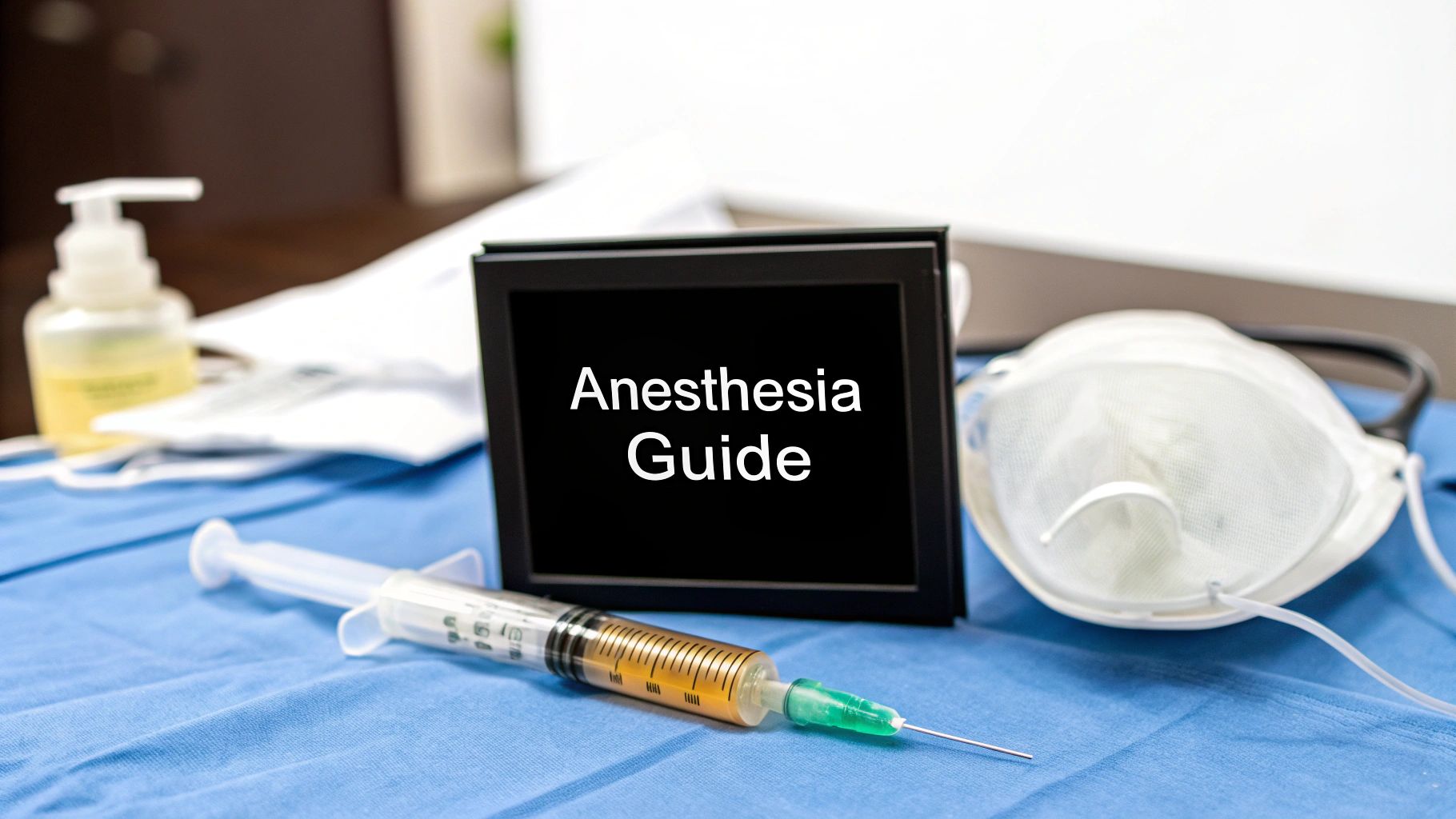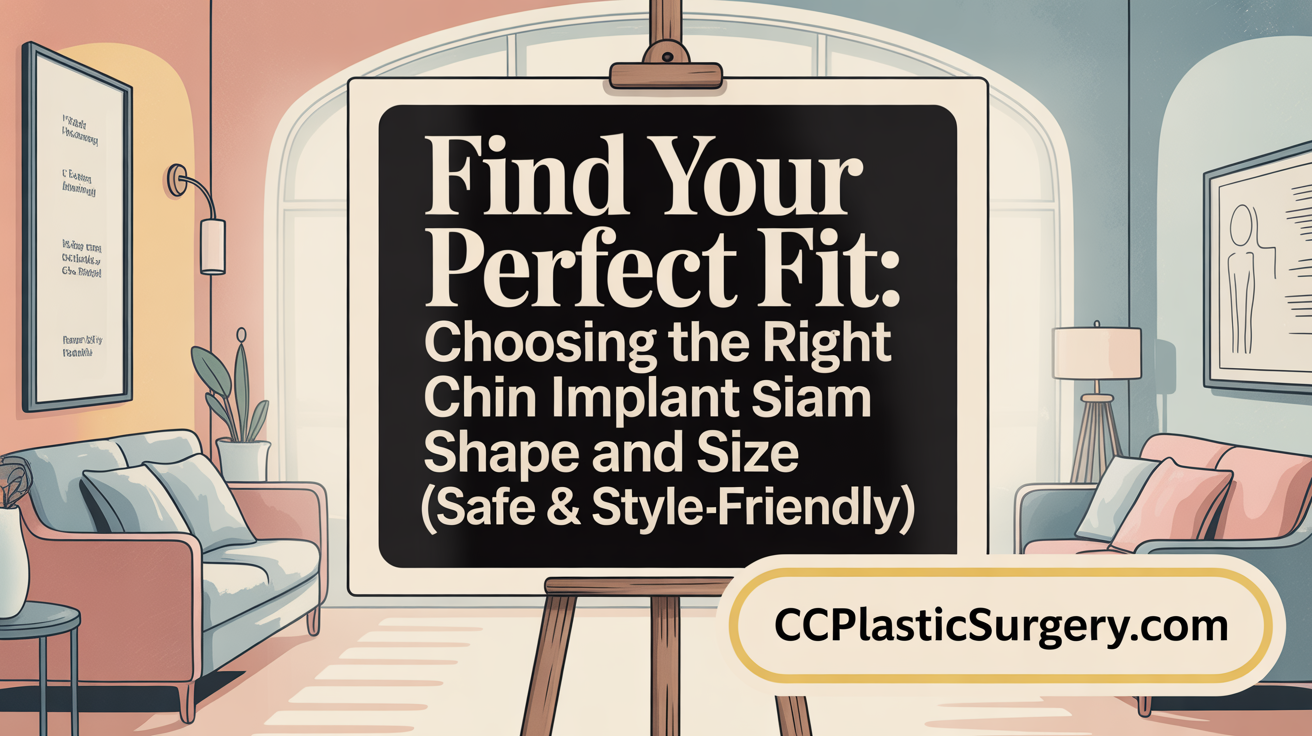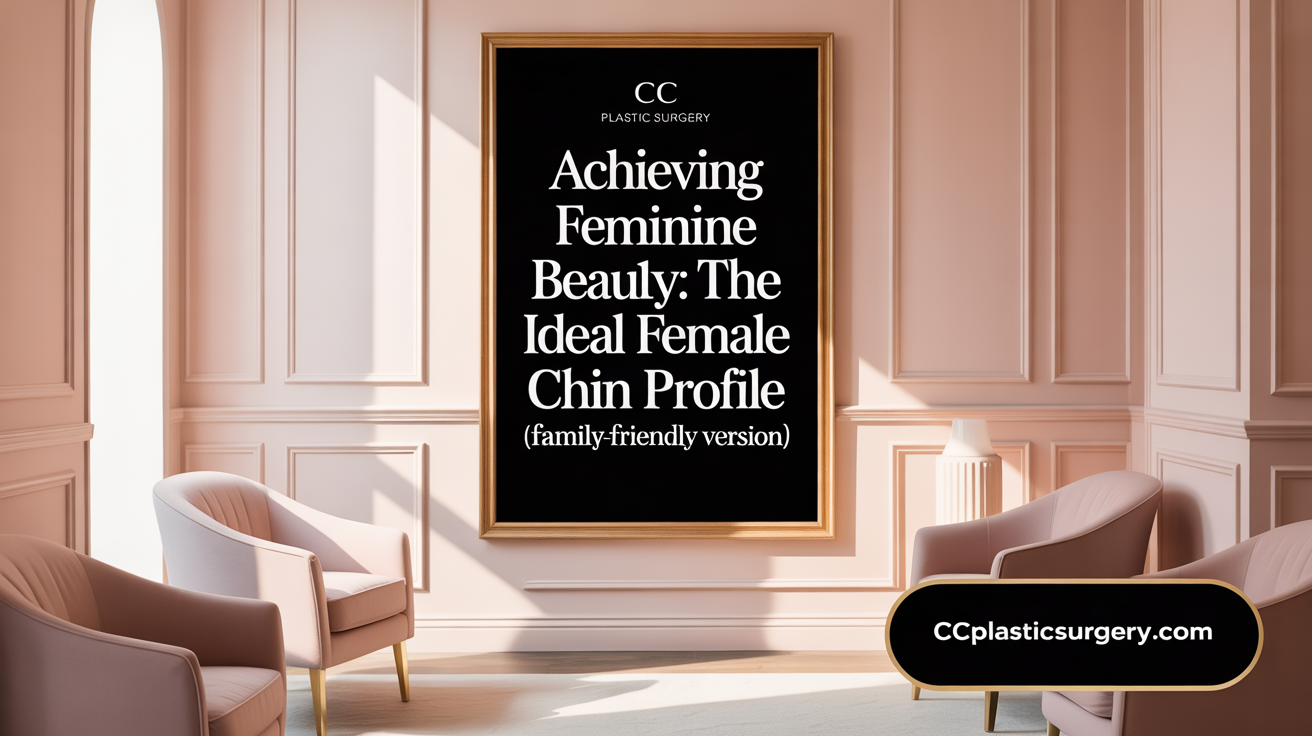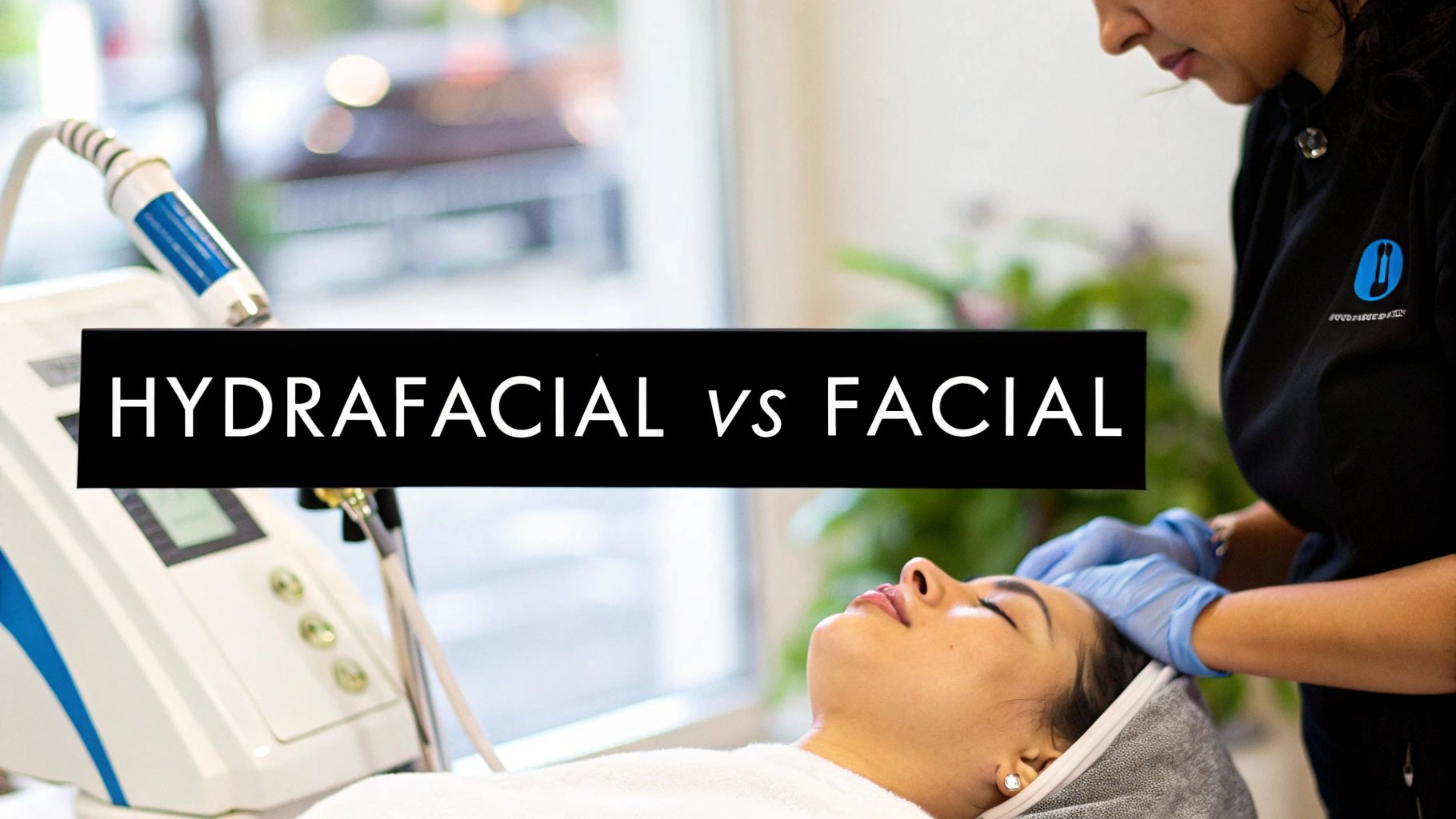
October 12, 2025
Anesthesia Types for Surgery A Patient's Guide
Discover the main anesthesia types for surgery. This guide explains general, regional, local, and sedation to help you prepare for your procedure.
Aug 26, 2025

Chin augmentation, also known as mentoplasty or genioplasty, is a transformative cosmetic procedure designed to enhance the size, shape, and projection of the chin. This surgical or non-surgical aesthetic intervention aims to restore balance and definition to the lower face, harmonizing facial features for a more attractive and confident appearance. Whether you're exploring options to correct a receding chin or seeking to sharpen your jawline, understanding the nuances of chin augmentation helps you define the profile you want while aligning with your personal aesthetic goals.

Chin implants can significantly enhance the shape and projection of the chin, creating a more balanced and attractive facial profile. They are often used to address a weak or receding chin, helping to improve overall facial harmony. The procedure involves placing a biocompatible implant—usually made of silicone or similar materials—against the jawbone through small incisions under the chin or inside the mouth.
Most patients see an immediate increase in chin size, which helps define the jawline and can make the nose appear smaller and better proportional. This enhancement not only improves aesthetic appeal but also contributes to a more confident and pleasing appearance.
Although some swelling and tenderness may occur during recovery, the long-term results are typically permanent, with proper placement and implant material ensuring durability. The procedure can dramatically change the facial profile, giving a sharper, more contoured look that complements other facial features.
Chin augmentation primarily uses medical-grade silicone implants, which are safe, durable, and customizable in various shapes and sizes to match individual facial structure. Besides silicone, other materials such as MEDPOR (porous polyethylene) or biological inserts may be used depending on the surgeon’s recommendation.
Non-surgical options include dermal fillers like hyaluronic acid or semi-permanent collagen-building fillers such as Sculptra. Fillers offer a reversible and less invasive alternative, lasting from several months to two years, suitable for patients seeking a temporary enhancement.
The most common approach involves making a small incision either inside the mouth or beneath the chin. Silicone implants are then carefully inserted and secured against the bone. External placement of incisions typically leaves minimal scars hidden under the chin.
In some cases, the procedure includes additional bone remodeling, such as sliding genioplasty, where the chin bone is moved forward for enhanced projection. The choice of technique depends on the patient's anatomy, aesthetic goals, and the surgeon’s assessment.
Most chin implants are designed to last a lifetime, with many patients enjoying permanent results. Silicone implants, in particular, are considered very durable and require minimal maintenance.
Recovery generally involves mild discomfort, swelling, and bruising, which usually resolve within one to two weeks. Patients are advised to follow specific post-operative care instructions, including avoiding strenuous activities for about 4-6 weeks.
Most individuals return to work within a week and gradually resume normal physical activity. Final results become fully visible within 6-8 weeks, with continued aging potentially affecting the appearance over time.
Chin enhancement can greatly boost self-esteem by creating a more harmonious face, improving facial symmetry, and defining the jawline. Many patients report satisfaction with their enhanced profile, feeling more confident in social and professional settings.
A well-proportioned chin not only enhances overall facial attractiveness but can also complement other features like the nose and cheeks. For many, the procedure offers a lifetime of aesthetic and psychological benefits, making it a popular choice for those seeking facial balance.

In the side profile, the ideal position of the chin aligns with a vertical plane dropped from the vermilion border of the lower lip. This ensures balanced facial proportions and helps in creating a harmonious profile. The chin should neither be overly prominent nor too receded.
A well-positioned chin supports other facial features, especially the nose and lips, contributing to overall symmetry. Achieving this balance is essential for a natural, attractive look.
Surgeons often evaluate chin position during consultations, using imaging techniques to plan the optimal placement. Proper alignment improves facial aesthetics and enhances confidence. This concept, rooted in orthodontics and cosmetic surgery, continues to guide interventions aimed at improving facial harmony.
Recent advances include using digital imaging and 3D modeling to simulate outcomes, allowing for precise planning and customized results. Proper positioning is crucial for natural-looking and lasting improvement.
Selecting the right shape of a chin implant depends on your facial features and cosmetic goals. Different shapes—such as square, round, anatomical, or custom—can dramatically alter your appearance.
During a consultation, a skilled surgeon assesses your jawline, chin symmetry, and overall facial harmony. They consider which implant shape will enhance your natural contours and meet your desired projection and width.
The implant material, such as silicone, Medpor, or Gore-Tex, also influences the choice, as each offers different textures and integration properties.
Modern techniques, including digital imaging and virtual simulations, help patients preview possible outcomes. This visualization ensures that the selected implant shape creates a balanced profile that complements your facial features.
Ultimately, the surgeon’s experience and your personal aesthetic preferences will guide the decision, ensuring a natural and satisfying result.
Every face is unique, which is why customization is vital for effective chin augmentation. A well-chosen implant shape must enhance your natural facial structure and achieve a harmonious balance.
Surgeons often tailor implants by considering your chin's convexity, width, and projection needs. For instance, a more angular face may benefit from a square-shaped implant, while a softer, rounded face might suit a rounded or anatomical shape.
Advanced imaging tools, including 3D modeling, allow surgeons to design implants that fit precisely with your anatomy. These custom options facilitate a seamless integration with your facial features, resulting in a more natural appearance.
Custom shaping ensures that the augmentation highlights your strengths and minimizes any asymmetries or irregularities.
Preoperative planning increasingly relies on digital imaging, such as 3D scans and computer models. These tools help simulate the final results, enabling both surgeon and patient to visualize potential outcomes before surgery.
Digital imaging allows precise measurement of chin convexity, projection, and width, informing the size and shape of the implant. It also assists in evaluating how different shapes will look in relation to other facial features.
This technology improves communication, sets realistic expectations, and reduces surprises after the procedure. During the planning phase, surgeons can adjust implant dimensions virtually, ensuring the final result aligns with the patient’s goals.
The ultimate goal of chin augmentation is to create a natural, balanced look that enhances overall facial harmony.
Surgeons emphasize proportion and proportionate projection, avoiding over-augmentation that can appear artificial. Proper positioning, appropriate sizing, and customized shaping ensure that the chin complements other features.
Postoperative assessment, including imaging and physical examinations, helps confirm that the outcome appears natural. Advancements in surgical techniques and planning software continue to refine these results.
In summary, selecting the right chin implant involves meticulous evaluation of facial anatomy, careful shaping, and precise positioning, often guided by innovative imaging tools. When properly executed, these steps contribute to a seamless, natural enhancement that restores confidence and emphasizes individual beauty.

The ideal female chin is subtle, harmonious, and gently rounded or slightly pointed, enhancing overall facial femininity. It should complement other features like the cheeks, nose, and jawline, creating a soft and balanced appearance.
A typical female chin has a smooth, rounded contour that seamlessly transitions into the neck. The jaw angle, which is the angle where the lower jawbone angles backward from the chin, is usually around 126 degrees, producing a gentle slope that adds to a delicate and elegant look.
Achieving facial harmony involves balanced proportions among all facial features. For women, the lower face, including the chin and jawline, should be proportionate yet slightly narrower than the upper face. This balance helps create a V-shaped side profile, often associated with femininity.
While many cultural standards favor a gentle, rounded chin, individual perceptions of beauty vary widely. Some cultures may prefer more tapered or sharper chins, and personal preferences will influence aesthetic goals. The key is creating a natural look that enhances each individual's unique features.
Chin augmentation, with implants or fillers, can improve chin projection, shape, and size to better align with these aesthetic ideals. The goal is to create a smooth, proportionate lower face that seamlessly blends with the rest of the facial features, enhancing overall harmony and attractiveness.

Chin augmentation can be performed using different techniques to meet individual needs. Surgical options include placing silicone or MEDPOR implants, or reshaping the jawbone through a procedure called sliding genioplasty. These methods provide a permanent enhancement and are tailored to improve overall facial harmony.
Non-surgical options involve dermal fillers, such as hyaluronic acid or semi-permanent collagen-building fillers like Sculptra. Fillers are reversible, quick to administer, and suitable for patients seeking temporary or slight adjustments.
Both approaches aim to enhance the projection, shape, and balance of the chin, but the choice depends on the patient's goals, facial anatomy, and preference for permanence.
Surgical chin procedures typically involve making small incisions either inside the mouth, underneath the chin, or sometimes outside under a natural skin crease. Internal incisions avoid visible scars, while external incisions may leave minimal, well-hidden scars.
Anesthesia choices include local anesthesia with sedation or general anesthesia, depending on the procedure’s complexity and patient comfort. Most outpatient surgeries last less than an hour, allowing for quick recovery.
Recovery usually involves some soreness, swelling, and a tight feeling in the chin area during the first week. Patients are advised to stick to a soft-food diet for the initial days and avoid strenuous activities for 4-6 weeks.
Most individuals can return to office work within 3-7 days, as swelling gradually decreases over the next few weeks. Full results become apparent in approximately six weeks to a few months, with final contours settling as healing completes.
Patients are encouraged to follow their surgeon’s guidelines closely, which include avoiding smoking, alcohol, and certain medications two weeks before and after surgery to promote optimal healing.
Risks include bleeding, infection, scarring, implant displacement, and asymmetry. Less common issues involve altered sensation, implant rejection or shift, and dissatisfaction with aesthetic results.
Most complications are manageable and rare, especially when the procedure is performed by an experienced, qualified surgeon. Implants are generally durable and intended to last a lifetime, though revision surgery may sometimes be necessary if issues arise.
Yes, it is often performed alongside other cosmetic surgeries such as rhinoplasty, neck lifts, or facelifts to enhance overall facial harmony. Combining procedures can streamline recovery time and produce more balanced, natural-looking results.
This integrated approach is popular for patients seeking comprehensive facial rejuvenation or profile enhancement, helping to create a well-proportioned and youthful appearance.

The price of chin augmentation varies widely based on several factors. One of the main influences is geographic location; major cities like New York, Los Angeles, and San Francisco typically have higher costs due to increased living expenses and operational costs. The surgeon's experience and reputation also play a role, with highly qualified, double board-certified specialists often charging more for their expertise.
The type of implant selected—such as silicone, GORE-TEX®, or Medpor®—affects the price. More complex procedures, like combining chin augmentation with other facial surgeries such as rhinoplasty or neck lifts, can increase overall costs. Additional fees may include facility charges, anesthesia, consultation, and post-operative care.
Generally, prices range from around $2,500 to over $10,000. Because chin implants are a cosmetic, elective procedure, they typically are not covered by health insurance. Patients should consider these variables when planning for their cosmetic goals.
Surgical chin augmentation usually costs between $3,000 and $8,000, covering the implant, surgeon’s fee, anesthesia, and facility expenses. In contrast, non-surgical methods like dermal fillers provide a quicker, less invasive alternative, often priced between $500 and $2,000 per treatment session. Fillers can be repeated every 6 to 12 months, enabling temporary enhancement.
Patients seeking a permanent solution might opt for implants, which last a lifetime, whereas fillers offer flexibility and reversibility, allowing adjustments or permanent disuse if unsatisfied.
Implants provide a long-lasting, often permanent enhancement, designed to improve chin projection and contour. They are suitable for those with a recessed or weak chin seeking a substantial change.
Fillers, mostly hyaluronic acid-based, are temporary and reversible, making them ideal for subtle modifications or trial runs before committing to surgery. Reversibility allows correction in case of asymmetry or dissatisfaction.
Chin implants are generally durable, lasting many years or a lifetime, with minimal need for replacement. Regular follow-up ensures implant stability and health.
Fillers require regular maintenance, with effects typically lasting from several months up to two years. Over time, fillers may need re-injection to maintain the desired appearance.
Natural methods like facial exercises, posture improvement, and weight management can enhance the jawline temporarily but are unlikely to produce significant or permanent changes in chin shape. Techniques such as makeup or styling facial hair can create optical illusions or slight improvements.
More advanced natural methods like 'mewing' and specific oral posture exercises might influence facial growth if started early in life but generally have limited impact on a well-formed chin in adults. For meaningful and lasting results, professional surgical or non-surgical procedures remain the most reliable options.
| Method | Duration | Permanence | Cost Range | Notes |
|---|---|---|---|---|
| Silicone Implant | Permanent | Yes | $3,000–$8,000 | Surgical, requires incision |
| Dermal Fillers | Months to 2 years | No, repeat needed | $500–$2,000 | Non-surgical, quick |
| Bone reshaping | Permanent | Yes | Variable | Complex, invasive |
| Facial exercises | Temporary | No | Free | Limited effect |
This overview emphasizes that while natural methods can offer subtle, temporary improvements, surgical and non-surgical cosmetic options provide more predictable, lasting enhancements for those seeking to improve chin shape and facial harmony.
Chin augmentation offers a powerful means to enhance facial harmony, restoring balance and definition to the lower face in a way that aligns with your aesthetic goals. Through tailored implant selection, expert surgical technique, and a clear understanding of recovery and risks, individuals can achieve natural-looking, lasting improvements to their profile. While options range from permanent implants to temporary fillers, the choice depends on personal needs, expectations, and lifestyle. Ultimately, consultation with a skilled facial plastic surgeon ensures a personalized approach to defining the profile you desire, enhancing not only appearance but also confidence and self-esteem.

October 12, 2025
Discover the main anesthesia types for surgery. This guide explains general, regional, local, and sedation to help you prepare for your procedure.

October 11, 2025
Learn the key differences between hydrafacial vs regular facial to choose the right treatment for glowing, healthy skin. Read our expert guide now!

October 10, 2025
Explore the best treatments for sagging skin, from non-invasive to surgical options. Find the perfect solution to restore your youthful appearance.